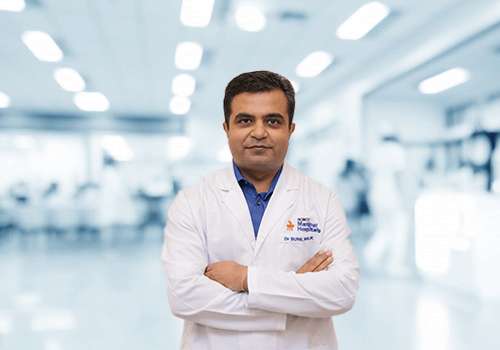There is no particular test to diagnose a ganglion cyst. The Doctor might choose one of the following diagnoses for the patient:
Patient History: The doctors might ask the patient if there was any case of cysts in the past. The Doctor may also question the patient about other current medical conditions, if any. If the patient says yes, the Doctor can enquire about the medicines the patient is taking (including ayurvedic/ herbal medications). Therefore, it is best to carry the medical reports if the patient has another illness.
Physical Examination: The Doctor can perform specific physical exams to help diagnose the ganglion cyst. The following are the physical examination that a patient may undergo:
- The Doctor can put pressure on the cyst. This will help him to check for any softness in the cyst.
- Transillumination: The Doctor can also pass a beam of light through the ganglion cyst to check if the cyst is transparent or solid.
- A few symptoms, like a lump, will also help the Doctor diagnose the cyst.
Clinical Investigation:
The Doctor may also perform the following clinical investigation to check for the ganglion cyst.
Aspiration: The Doctor uses a needle and syringe to pull out the fluid from the cyst. If the fluid appears thick and straightforward, it's more likely a ganglion cyst.
Imaging Tests: The Doctor can also advise specific imaging tests to diagnose the cyst. A few tests may not help in diagnosing the ganglion cyst. But they rule out other medical conditions. These are the following imaging tests:
- X-ray: An x-ray test shows a clear image of dense body parts, such as bone. Hence, it helps to eliminate the possibility of tumours and arthritis.
- Ultrasound: With the help of sound waves, an ultrasound report shows a clear image of organs and tissues. Thus, it would help to diagnose the ganglion cyst.
- Magnetic resonance imaging (MRI): Using magnetic fields and radio waves, an MRI generates a clear picture of the ganglion cyst (if any). Not only that, but it also helps to distinguish a cyst from a tumour.
- Computed Tomography Scan (CT Scan): A CT scan uses x-rays to detect a ganglion cyst.
How to prepare for the Doctor's consultation?
What can you do?
The patients should follow these points:
- Call the Doctor's clinic to make a prior appointment. This will help to save time and avoid confusion.
- Take medical reports (in case of other illnesses, such as arthritis, or if the patient had a cyst in the past).
- The Doctor will ask questions about the undergoing treatment (in case of any disease). Be prepared to answer them correctly to help ease the diagnosis and treatment.
- The Doctor may ask to conduct some clinical tests. Thereupon wear comfortable and loose clothes.
- The Doctor may also advise laboratory tests. Be prepared for that.
- If, in case, imaging tests such as MRI and CT Scans seem bothersome, talk to the doctor/ family member about it. It helps to calm the mind.
What to expect from the Doctor?
- The Doctor can ask the patient to undergo physical exams, such as aspiration.
- The Doctor can advise specific diagnostic tests, like CT scans, MRIs, and Ultrasounds.
- After the diagnosis, the Doctor can prescribe the patient medicines or surgery.
What questions should you ask the Doctor?
One can ask the following questions to the Doctor:
- How to prevent disease progression?
- Is surgery needed in my case?
- Why is surgery required?
- What is the optimal time for surgery in my case?
- Is the illness serious?
- What diet should I take?
- What is the estimated cost of surgery?
- Can it be managed without surgery?
- Why has a cyst developed in my body?
- What is the risk factor?
| Surgery Type |
Surgery Cost
|
| Ganglion Cyst Excision |
INR 40,000 to 1 Lakh |
The treatment approach and selection of procedures depend on the patient’s health condition and the opinion of your treating doctor


























